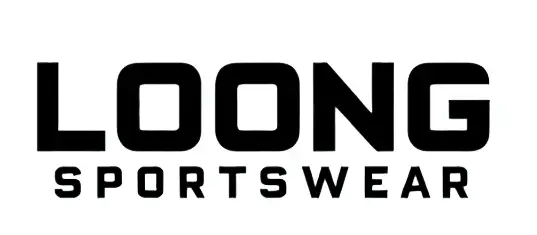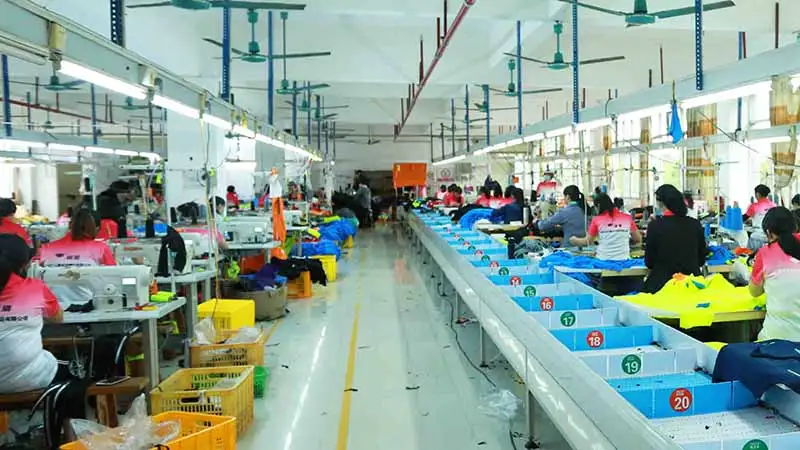Have you ever wondered how to source and import sportswear from China? Are you planning to import sportswear clothing from China to grow your business, but not sure which suppliers to consider?
We have compiled a complete step-by-step guide for global importers on how to source and import sportswear from China. We hope that this can help to point you in the right direction after reading this article.
China has become the global powerhouse for sportswear clothing manufacturing, supplying an estimated 70% of the sportswear clothing apparel in the world. China offers a unique combination of manufacturing scale, skilled labor, raw material availability, and competitive pricing.
If you are a wholesaler, retailer, e-commerce seller, construction developer, or project contractor looking to import bathroom or kitchen plumbing fixtures, understanding the full sourcing and import process is essential to reduce risk and maximize profit.
Note: The content listed are not ranked in any particular order.
Disclaimer: The company names, founding dates, and addresses are sourced from publicly available information online.
Please note: This article is not exhaustive. There may be other reputable sportswear manufacturers in China worth considering.
Table of Content
- Why Source Sportswear from China in 2025?
- Understanding the Sportswear Market in China
- Understanding the Types of Sportswear You Can Import
- Where to Find Reliable Sportswear Suppliers in China
- How to Evaluate Chinese Sportswear Factories
- Negotiating Prices and MOQs with Chinese Sportswear Suppliers
- Custom Branding & Private Label Options for Sportswear
- Quality Control and Compliance
- Shipping & Importing: Logistics You Must Know
- How to Avoid Scams and Bad Deals
- Working with Sourcing Agents in China
- The Other Notable Sportswear Manufacturers in China
- People Also Ask (PAA)
Why Source Sportswear from China in 2025?
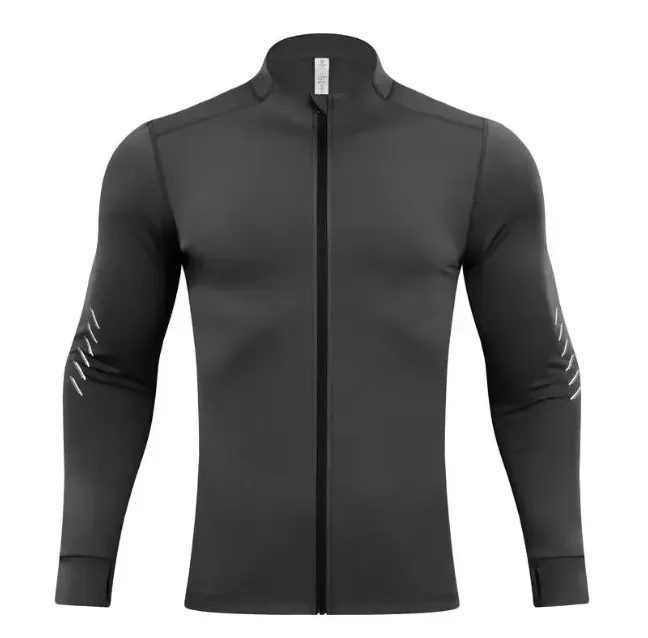
Sourcing and importing sportswear from China has become a go-to strategy for thousands of brands, retailers, and entrepreneurs worldwide. As of 2025, China remains the global epicenter of sportswear production, home to thousands of OEM/ODM activewear factories that produce for major global brands.
Whether you are launching your private label gym wear line or scaling an existing eCommerce business, sourcing from China offers competitive pricing, advanced manufacturing capabilities and a wide range of materials and design customization options.
Major production placess like Guangzhou, Xiamen, and Yiwu are equipped to serve everyone from startups to global retailers. In this article, you will learn how to find reliable suppliers, avoid scams, negotiate better prices, and handle shipping, all while building a profitable brand.
Understanding the Sportswear Market in China
Sportswear market has experienced rapid growth over the past decade in China, fueled by rising health awareness, government sports initiatives, and a booming middle class. As one of the largest producers and consumers of activewear in the world, understanding this market is crucial for brands, importers, and manufacturers looking to capitalize on global trends.
The sportswear market in China is expansive, encompassing products like gym wear, running apparel, yoga clothes, compression wear, and athleisure. Urbanization, increased disposable income, and the growing popularity of fitness activities such as running, yoga, and cycling have created robust demand.
Local and international brands compete intensely, with global giants like Nike, Adidas, and Lululemon dominating premium segments, while homegrown brands such as Li-Ning and Anta aggressively expand both online and offline. The shift toward e-commerce and social media marketing also fuels growth, making China a hotspot for innovation in sportswear retail.
Key Sportswear Market Sections
Performance Sportswear includes specialized clothing designed for sports activities, such as moisture-wicking fabrics, compression gear, and breathable materials. Consumers demand functionality, durability, and comfort for activities like running, gym workouts, and cycling.
Athleisure sportswear is blurring the lines between sportswear and casual wear, and athleisure is hugely popular in China’s urban centers. The trend caters to consumers who want stylish yet comfortable clothing suitable for both exercise and daily life.
Yoga and Wellness Apparel, Yoga wear, and wellness clothing are growing niches, supported by increasing participation in yoga, pilates, and mindfulness practices. Eco-friendly and seamless fabrics are particularly favored in this segment.
Top Sportswear Manufacturing Regions in China

Sportswear production in China is concentrated in several key regions, such as Guangdong, Fujian, and Zhejiang.
Guangdong Province is widely recognized as the heart of the sportswear manufacturing industry in China. Cities like Guangzhou, Dongguan, and Shenzhen are home to thousands of factories specializing in activewear, gym apparel, yoga clothing, and athleisure. These manufacturers are known for their ability to handle full-service OEM and ODM production, offering everything from product development and pattern making to packaging and global shipping.
One of key strengths is its advanced supply chain and infrastructure in Guangdong. The region has easy access to high-performance fabrics, skilled labor, and modern production equipment. Many factories are equipped with capabilities for sublimation printing, seamless stitching, and eco-friendly materials, making them attractive to both startup brands and established retailers seeking premium-quality goods with fast turnaround times.
Guangdong also leads in customization and fashion-forward designs. Whether you’re sourcing sports bras, compression leggings, or lifestyle athleisure wear, factories here can support private labeling, low MOQs, and trend-driven collections. Its proximity to textile hubs and major ports like Shenzhen and Guangzhou ensures cost-effective logistics, making it a preferred region for international sportswear importers.
Fujian Province is a major sportswear manufacturing base in China, known for its strong foundation in performance and outdoor apparel. Key cities like Xiamen, Fujian, Quanzhou, and Jinjiang are home to some of the country’s most advanced factories specializing in running wear, athletic shoes, compression garments, and outdoor gear. The region has decades of experience serving international markets, with a strong focus on quality, innovation, and functional design.
Fujian stands out for its integration of sportswear and footwear production. Many leading Chinese brands, such as Anta and 361°, originated here, and the local supply chain is deeply connected to both textile and shoe manufacturing. Factories in Xiamen, for example, often produce seamless yoga sets and lightweight running outfits using breathable, sweat-wicking fabrics, while Jinjiang is known for combining fabric technology with dynamic sportswear styles.
With a strong export orientation and skilled workforce, Fujian is ideal for buyers seeking performance-driven activewear. Manufacturers in this region are well-versed in international quality standards and often work with foreign brands on OEM and ODM projects. Their deep understanding of technical garments, paired with competitive pricing and scalable production, makes Fujian a trusted destination for sourcing high-performance sportswear.
Zhejiang Province is a dynamic place for sportswear and textile manufacturing, known for its efficient mass production and competitive pricing. Cities like Yiwu, Wenzhou, and Hangzhou play a key role in supplying both domestic and international markets with a wide range of activewear, including yoga sets, fitness leggings, sports bras, and athleisure clothing. The region excels in combining fashion-forward designs with functional fabrics.
Yiwu, in particular, is famous for small orders and fast turnaround times, making it ideal for startups and e-commerce brands. Many manufacturers offer flexible MOQs and support private labeling, dropshipping, and rapid sampling. Wenzhou and Hangzhou, on the other hand, are better known for mid- to high-end sportswear production, especially styles influenced by current fashion trends and streetwear.
Zhejiang mature textile ecosystem and strong logistics infrastructure make it a strategic sourcing destination. With access to local fabric markets and shipping ports, businesses benefit from streamlined production cycles and lower lead times. Whether you’re launching a new fitness brand or scaling up production, Zhejiang offers reliability, affordability, and style in one complete package.
Sportswear Market Trends Worldwide
More brands are sourcing from Chinese manufacturers to create customized, private label collections that cater to local preferences and fast-changing trends.
Demand is growing for eco-friendly materials such as recycled polyester and bamboo, as well as smart textiles that improve comfort and performance.
Platforms like Tmall, JD.com, and Douyin (TikTok) are critical sales channels. Influencer partnerships and livestream shopping events drive consumer engagement and boost sales.
The sportswear market in China presents vast opportunities for manufacturers, brands, and importers. By understanding the market segments, manufacturing places, and emerging trends, businesses can strategically position themselves to capture market share. Whether focusing on performance gear, athleisure, or yoga wear, China offers competitive advantages in production, innovation, and market access.
Understanding the Types of Sportswear You Can Import
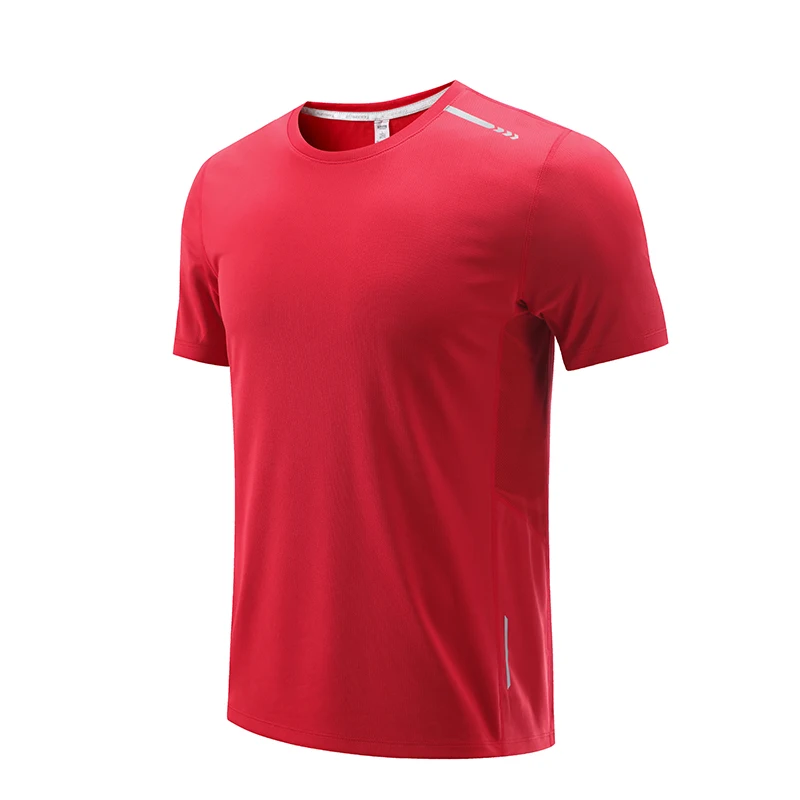
Before you dive into supplier sourcing, define what kind of sportswear you want to import. The market is vast and continues to grow with new trends like athleisure, eco-friendly fabrics, and gender-neutral fitness apparel.
List of Some Common Categories of Sportswear to Import from China
- Gym wear sets (men’s and women’s)
- Yoga apparel (leggings, tops, bras)
- Compression clothing (shorts, shirts)
- Team jerseys (basketball, football, soccer)
- Running and cycling gear
- Tracksuits and hoodies
- Kids’ sportswear
- Sportswear for Mens
- Sportswear for Womens
- Sports Polo Shirts
- Dri fit Coolmax Shirts
- Basketball Shirts and shorts
- Football & Soccer Jerseys Uniforms
- Sweatshirts & Sweatpants
- Jackets & Windbreakers
Private label sportswear is that you control branding, logo, and design.
White Label sportswear is that the supplier makes a generic product; you rebrand it.
OEM (Original Equipment Manufacturer) sportswear means that you provide the design; the factory manufactures it.
ODM (Original Design Manufacturer) sportswear means the supplier has ready-made designs you can modify.
Where to Find Reliable Sportswear Suppliers in China

Reliable sportswear suppliers in China can be found through trusted B2B platforms, trade shows, and sourcing hubs. Websites like Alibaba, Made-in-China, and Global Sources allow you to filter verified manufacturers based on certifications, export history, and product range. Attending major trade events such as the Canton Fair or ISPO Shanghai is also an effective way to meet factory representatives, check product quality firsthand, and build direct business relationships.
Geographically, sourcing from manufacturing regions like Guangdong, Fujian, and Zhejiang provinces increases your chances of finding experienced, quality suppliers. These regions are known for their concentration of factories that specialize in OEM/ODM sportswear production. For added assurance, you can also hire local sourcing agents or third-party inspection services to help verify suppliers and manage communication, sampling, and quality control during production.
Finding a good supplier is half the battle. Thankfully, China offers multiple sourcing avenues, both online and offline.
List of Online Platforms to Source from:
- Alibaba – Most widely used B2B platform
- Made-in-China – Verified factories and certification-focused
- Global Sources – Ideal for branded importers
- 1688.com – Domestic prices (best used with a sourcing agent)
List of Trade Shows to attend:
- Canton Fair (Guangzhou) – Spring & Autumn
- ISPO Beijing – Focused on sports and outdoor gear
- CHIC (Shanghai) – China International Clothing Expo
The other methods:
- Local sourcing agents
- Trading companies with verified export experience
- Direct factory reps (especially in Guangzhou, Xiamen, Yiwu)
How to Evaluate Chinese Sportswear Factories
Evaluating Chinese sportswear factories requires a careful look at their production capabilities, quality control systems, and export experience. Start by reviewing their certifications (such as ISO9001, BSCI, or Sedex), production scale, and whether they offer OEM/ODM services. Ask for samples to assess fabric quality, stitching, elasticity, and colorfastness. A reliable factory should provide clear product specs, customization options, and transparent pricing with reasonable minimum order quantities (MOQs).
It is also important to assess communication, lead times, and factory reputation. Look for suppliers with good response rates, fluent English communication, and experience working with international clients. Check for verified status on platforms like Alibaba or Made-in-China, and read customer reviews or request client references. If possible, conduct a video factory tour or use a third-party inspection service to verify production standards before placing bulk orders.
Don’t let the website photos fool you. Many buyers make the mistake of skipping due diligence, leading to low-quality products or even scams.
List of Key Factors to Evaluate
- MOQ: Can they meet your minimum order quantity (start small if testing)?
- Production Capacity: Can they scale with your growth?
- Certifications: OEKO-TEX, ISO 9001, BSCI, WRAP
- Years in business: More years = more reliability (not always, but often)
- Always ask for 1–3 samples of your selected products. This lets you check stitching quality, sizing accuracy, elasticity, test moisture-wicking and fabric feel and ensure accurate branding and packaging.
Negotiating Prices and MOQs with Chinese Sportswear Suppliers
When negotiating prices and minimum order quantities (MOQs) with Chinese sportswear suppliers, preparation and relationship-building are key. Start by clearly communicating your product requirements, target price, and expected volume. Suppliers are often open to negotiation, especially if you demonstrate long-term potential or flexibility in fabric and design choices. Comparing quotes from multiple factories can also give you leverage to reach better terms without compromising quality.
To lower MOQs or secure better pricing, consider adjusting product specs, bundling multiple styles, or offering a trial order. Building trust through consistent communication and professionalism increases your bargaining power over time. Many suppliers are willing to offer lower MOQs for first-time buyers or startups, especially if they sense future business opportunities. A win-win mindset and understanding of the supplier’s production costs will help you achieve more favorable deals.
Effective negotiation is part art, part science. Chinese suppliers expect some level of bargaining, but not without preparation.
Prices by Product for your reference
- Yoga Sets: $8–15 FOB
- Gym Shorts: $3–6 FOB
- Compression T-Shirts: $5–10 FOB
- Team Jerseys: $6–12 FOB (varies with sublimation)
Pro Tips for Negotiating with Chinese Sportswear Suppliers
- Know your target price and be clear about your order volume.
- Ask for tiered pricing (e.g., 300, 500, 1000 pcs).
- Discuss sampling costs, can they be refunded after a bulk order?
- Always clarify lead times and payment terms (TT 30/70, PayPal for small orders)
Custom Branding & Private Label Options for Sportswear
Chinese sportswear manufacturers offer a wide range of custom branding and private label services to help you build a unique identity. From logo printing and custom tags to personalized packaging and exclusive fabric colors, suppliers can tailor products to match your brand vision. Most factories support techniques like screen printing, heat transfer, embroidery, and silicone logos, ideal for building brand recognition in a competitive market.
Private label production is especially popular among startups and e-commerce brands looking to launch quickly with minimal design resources. Many OEM/ODM suppliers provide design assistance, tech pack development, and sample prototyping. With flexible MOQs and scalable manufacturing options, custom branding in China is both accessible and cost-effective, making it easy for businesses to stand out with professional, retail-ready activewear.
Launching a successful sportswear line today almost always involves private labeling. Chinese manufacturers are highly experienced in helping international buyers create branded gym wear, from logo placement to custom packaging.
The list of the items you can customize below
- Logo application: heat transfer, embroidery, rubber patch, reflective ink
- Labels & tags: woven neck labels, care instructions, hangtags
- Fabric & color: custom Pantone shades, moisture-wicking, recycled fabrics
- Fit & sizing: US, EU, AU sizes or custom measurements
- Packaging: polybags, boxes, eco-packaging with branding
Before customizing the sportswear items, it is better to prepare these types of files, such as Logo files in AI, EPS, or high-res PNG, Tech packs (optional but ideal) includes measurements, material, stitching instructions, print placement.
Some suppliers offer in-house designers. You can send Pinterest inspiration, and they will help recreate or adjust it.
Quality Control and Compliance
Quality control is a critical step when sourcing sportswear from China to ensure your products meet both brand standards and customer expectations. Reputable factories implement multi-stage inspections, covering raw materials, in-line production, and final packaging, to monitor stitching accuracy, fabric durability, color consistency, and sizing. For added assurance, many buyers use third-party quality inspection agencies to check product quality before shipment.
Compliance with international standards is equally important, especially for export markets. Depending on your target country, look for manufacturers that can provide certifications such as OEKO-TEX, REACH, ISO9001, or BSCI. These credentials help verify that the sportswear is safe, environmentally friendly, and ethically produced. Staying compliant not only protects your brand but also builds long-term trust with customers and retailers.
Poor quality is one of the biggest risks when importing from overseas. That’s why quality control (QC) is a non-negotiable step.
The list of quality control checklist
- Stitching strength and pattern alignment
- Logo accuracy (placement, size, color)
- Fabric stretch and shrinkage testing
- Color fastness (no fading or bleeding)
- Sizing tolerance (+/- 1-2cm acceptable)
- Packaging correctness
Normally, we can inspect quality control during production (DUPRO) (when 20–60% progress) or have a final random inspection before shipment, or alternatively, we can ask the third party of QC service provider to help with quality inspection, such as SGS, TUV SUD, Intertek, QIMA (AsiaInspection) or we can work with the local quality inspection person who is experienced in the sportswear industry.
Shipping & Importing: Logistics You Must Know
Understanding logistics is essential when importing sportswear from China to ensure smooth delivery and cost control. You can choose between shipping methods like air freight (fast but expensive) or sea freight (slower but more economical for bulk orders). Many suppliers offer FOB (Free on Board) or EXW (Ex Works) terms, so it’s important to clarify who handles shipping, customs, and insurance. Partnering with a reliable freight forwarder or logistics agent can greatly simplify the process and help avoid delays.
Import regulations and documentation vary by country, so it’s vital to be prepared. Make sure your supplier provides accurate commercial invoices, packing lists, and bill of lading (BOL). You may also need to pay import duties or taxes based on your local customs rules.
Checking your country’s clothing import requirements, such as product labeling, safety standards, or textile certifications, can prevent costly mistakes and ensure your shipment clears customs smoothly.
After production, shipping becomes the next big milestone. Choosing the right shipping method depends on your budget, timeline, and order volume.
Shipping Freight Options
| Method | Best For | Time | Cost |
|---|---|---|---|
| Air Freight | Small or urgent orders | 5–10 days | High |
| Sea Freight (LCL/FCL) | Bulk orders | 20–40 days | Low |
| Courier (DHL, UPS, FedEx) | Samples, small orders | 3–7 days | Highest |
Shipping incoterms include EXW, FOB, CIF, and so on, EXW allows you to handle everything from the supplier’s door. FOB needs the supplier to deliver to the port; you handle the rest. CIF requires the supplier to cover shipping to your port.
The list of documents required for shipping
- Commercial invoice
- Packing list
- Bill of Lading / Airway Bill
- Certificate of Origin (optional)
- Import license (depends on country)
- The common HS Code for Sportswear: 6112.41 (Women’s or girls’ swimsuits), 6109.10 (T-shirts), 6203.42 (men’s trousers)
- Check import tariffs in your country to estimate duty
How to Avoid Scams and Bad Deals
To avoid scams and bad deals when sourcing sportswear from China, always verify your supplier’s credentials before placing an order. Use trusted B2B platforms like Alibaba, Made-in-China, or Global Sources, and look for Gold Suppliers, verified badges, and third-party audit reports. Ask for business licenses, factory photos, or live video calls to confirm legitimacy. Avoid deals that sound too good to be true, extremely low prices or rushed offers can be red flags.
Protect your business by starting with small trial orders and using secure payment methods. Choose platforms that support trade assurance or use payment methods like PayPal, Letter of Credit (L/C), or escrow services for better buyer protection. Clear contracts outlining product specs, delivery times, and quality standards are essential. When in doubt, consider hiring a sourcing agent or third-party inspection company to help manage risks and ensure reliable production.
While most suppliers are legitimate, scams do exist, especially on platforms like Alibaba or 1688. Here are some red flags to watch and tips to stay safe in order to reduce your risk.
Red Flags
- Refusal to video call or factory tour
- No business license or lack of verified certifications
- Pushy sales tactics or rushed contracts
Tips
- Always verify the business license (ask for photo)
- Ask for factory photos or request a live call/tour
- Use Alibaba Trade Assurance or PayPal for small orders
- Be considerable when wire full payment upfront, try to use 30/70 or 50/50 splits
Working with Sourcing Agents in China
Sourcing agents in China act as your local partners, helping you find reliable manufacturers, negotiate prices, and manage the production process. They have in-depth knowledge of the local market, speak both English and Chinese, and often have established relationships with verified factories. This makes them valuable for businesses unfamiliar with Chinese business culture or those without the time to vet multiple suppliers themselves.
A good sourcing agent can also handle quality control, logistics coordination, and even product development. They can visit factories on your behalf, check samples, oversee mass production, and ensure orders meet your specifications before shipping. While they charge a service fee or commission, the cost is often offset by the time, risk, and communication barriers they help you overcome, especially useful for startups and small to medium-sized importers.
Hiring a China-based sourcing agent can be a smart move, especially if you are new or dealing with language barriers, quality concerns, or multiple SKUs.
The Sourcing Agent can Help with Below Things
- Finding multiple suppliers based on your specs
- Auditing and negotiating pricing
- Coordinating sampling and production
- Handling quality control and shipping
To gain the best service from sourcing agent, they may charge this, usually 5–10% of order value, some offer flat fees for small batch orders.
The Other Notable Sportswear Manufacturers in China
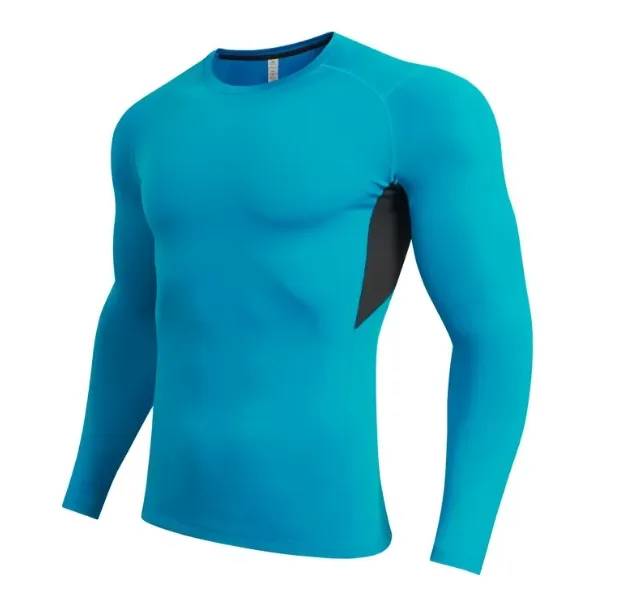
Beyond the major regions like Guangdong, Fujian, and Zhejiang, several other regions in China also host reputable sportswear manufacturers. Jiangsu Province, especially cities like Suzhou and Nantong, is known for high-quality fabric production and advanced textile technology, making it a solid choice for premium activewear and eco-friendly materials. Shandong Province has a growing sportswear and uniform manufacturing base, particularly for bulk and export orders.
Smaller cities such as Changshu, Quanzhou, and Yiwu also have inhouse specialized factories that offer competitive pricing and flexible MOQs. These manufacturers often cater to niche markets, including sportswear for children, dancewear, and seamless yoga apparel. While less internationally known, many of these suppliers provide strong OEM/ODM support and are well-equipped to work with emerging brands looking for cost-effective solutions without sacrificing quality.
Here is a curated list of the other notable and well-rated sportswear manufacturers in China.
| Factory Name | Location | Specialties | MOQ |
|---|---|---|---|
| Loong Sportswear | Guangzhou | OEM/ODM, bulk orders | 500 pcs |
| Xiamen Toptex | Xiamen | Yoga sets, sports bras | 500 pcs |
| FitFabrik China | Guangzhou | European style athleisure | 500 pcs |
| Winfly Apparel | Fujian | Running wear, T-shirts | 500 pcs |
| ShengLeaf | Shenzhen | Crossfit & bodybuilding wear | 500 pcs |
Sourcing sportswear from China in 2025 is more accessible, efficient, and scalable than ever. With smart planning, factory vetting, and a quality-first approach, you can launch or expand your brand with confidence.
If you would like to know more about the top 20 sportswear manufacturers in China, please refer to this page Top 20 China Sportswear Manufacturers Approved in 2025.
People Also Ask (PAA)
Yes, importing sportswear from China can be highly profitable due to low manufacturing costs, flexible MOQ options, and access to high-quality OEM/ODM factories. When you factor in efficient logistics, competitive FOB pricing, and the ability to build your own brand with private labeling, the profit margins, especially in eCommerce or DTC channels, can range from 30% to 200%, depending on your market and positioning.
The required licenses depend on your country. In most cases, you’ll need a business license, a tax ID number, and possibly an importer of record (IOR) registration. For countries like the U.S., a general import license is not required, but you must follow customs regulations, declare HS codes, and ensure your products meet safety and labeling requirements. For the EU, compliance with REACH and textile labeling laws is essential.
Import taxes vary by country and product type. For example, in the United States, import duties on activewear typically range from 10% to 16.5%, depending on the material (cotton, polyester, spandex) and garment type (HS code classification). In the EU, VAT (usually around 20%) is applied, along with customs duties between 12% and 20%. It is best to consult your local customs authority and verify the HS code (e.g., 6109.10 for T-shirts) for exact rates.
The main provinces that specialize in fitness and sportswear manufacturing include Guangdong (especially Guangzhou and Dongguan), Fujian (Xiamen and Jinjiang), Zhejiang (Yiwu), and Jiangxi. Guangdong is known for premium activewear and private label production, while Fujian is strong in performance and outdoor sportswear. Yiwu offers lower MOQs and cost-effective mass production.
Yes, many Alibaba suppliers are legitimate and experienced exporters, but you must verify them. Look for Gold Supplier status, Trade Assurance, and Verified badges. Always check business licenses, request factory photos or video calls, and order samples before placing bulk orders. Using secure payment methods like Trade Assurance or PayPal also adds a layer of protection against fraud.
Shipping times vary based on the method. Air freight takes 5–10 days, Sea freight (FCL/LCL) takes 20–40 days, Courier (DHL, FedEx, UPS) takes 3–7 days for samples or small orders. Production usually takes 2–4 weeks, so plan your lead time accordingly. Always confirm the production and transit time with your supplier or freight forwarder.
Absolutely. Guangzhou is one of the top placess for gym wear and activewear production in China. The city is home to numerous experienced factories offering high-quality OEM and private label services for global brands. You’ll find a wide variety of fabrics, trims, and custom branding options, plus easy access to wholesale markets and logistics support.
The best places to import yoga clothes are Xiamen, Guangzhou, and Yiwu. Xiamen specializes in high-quality yoga sets with seamless or eco-friendly fabrics. Guangzhou offers fashion-forward yoga and gym wear with full customization options. Yiwu is ideal for cost effective bulk orders with lower MOQs. Each city has a strong network of factories catering to small startups and large-scale buyers alike.
To find a private label activewear manufacturer in China, start by searching on trusted B2B platforms like Alibaba, Made-in-China, or Global Sources, using keywords like “private label gym wear” or “OEM activewear factory China.” Filter suppliers by Trade Assurance, Verified status, and years of export experience. You can also attend trade shows such as the Canton Fair or ISPO Shanghai to meet manufacturers in person. For more customization and faster communication, consider hiring a sourcing agent based in Guangzhou or Xiamen, two major places for fitness clothing production.
Compression wear factories are primarily located in Dongguan (Guangdong province), Xiamen (Fujian province), and Yiwu (Zhejiang province). Dongguan is known for high-tech sportswear and body-contouring apparel using advanced stitching and performance fabrics. Xiamen offers seamless and breathable compression garments ideal for running, training, and cycling. Yiwu specializes in cost-effective production with fast turnaround and low MOQs.
Yes, Chinese activewear can be excellent quality, especially when produced by factories experienced in exporting to the U.S., EU, and Australia. Many Chinese manufacturers offer moisture-wicking, squat-proof, four-way stretch fabrics, along with precision flatlock stitching and branded customization. Quality depends on your factory selection, so always vet suppliers, request samples, and perform quality inspections before bulk production. Many well-known Western brands quietly source their activewear from China.
